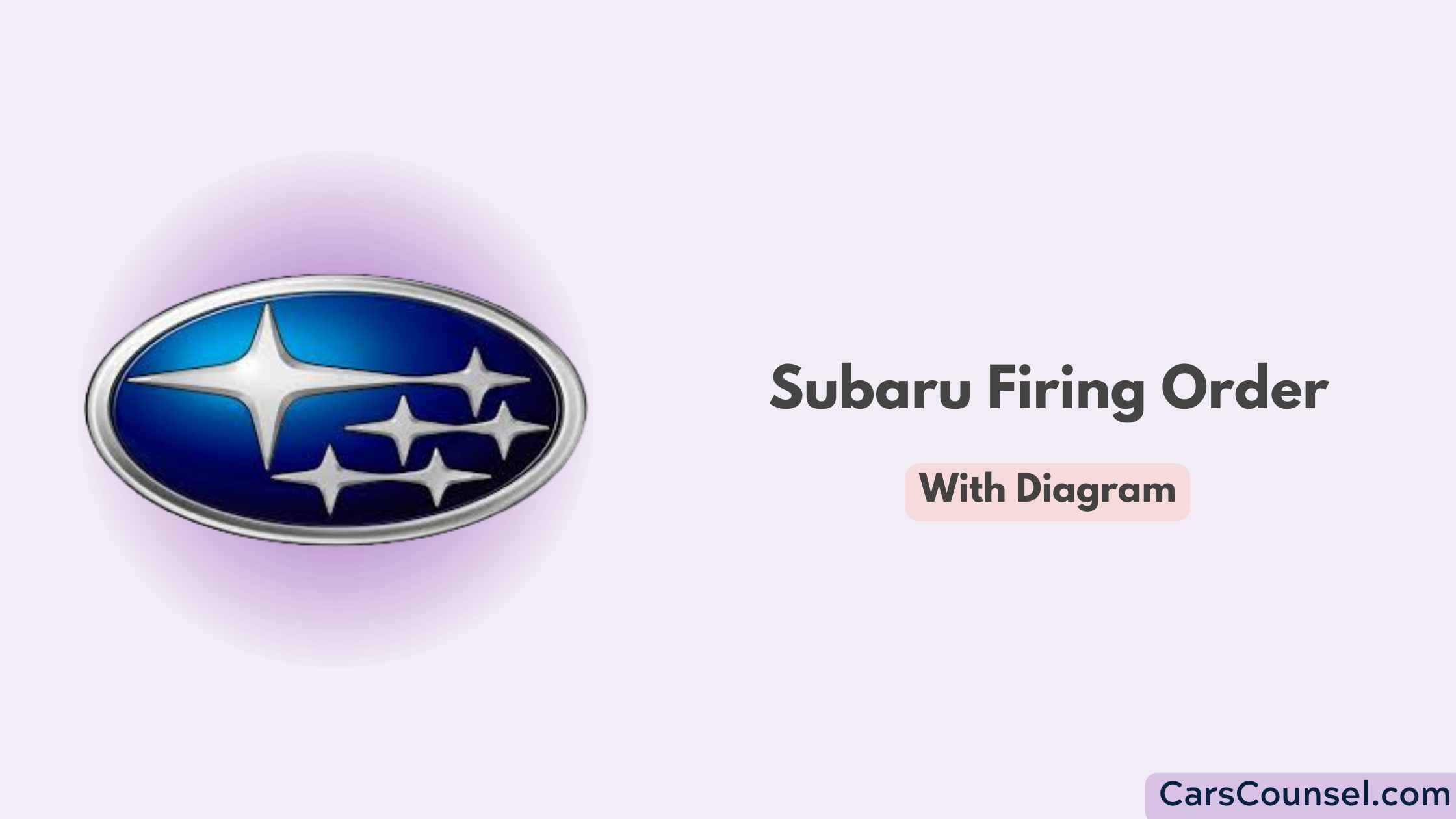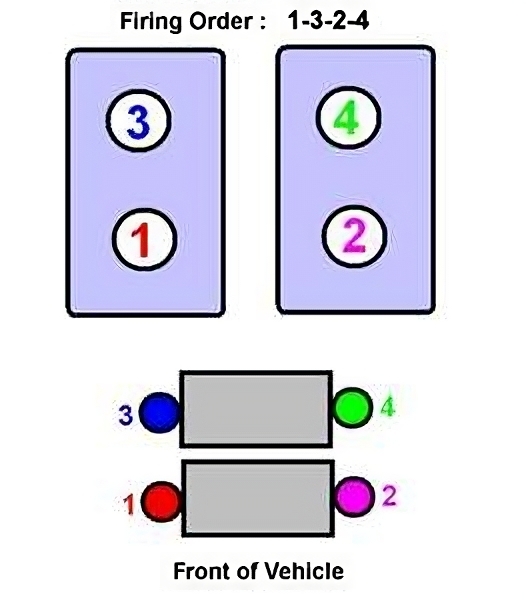The firing order for Subaru engines varies depending on the type. For the Subaru Boxer 4 engine, the order is 1-3-2-4. When dealing with a Subaru Boxer 6 engine, it changes to 1-6-2-5-3-4. It’s important to understand that this ignition sequence is crucial for your vehicle’s best combustion and overall performance.

Stick around, there’s more to discover about how the cylinder arrangement can significantly influence your Subaru’s power, balance, and longevity.
Quick Navigation
Key Takeaways
- Subaru Boxer 4 engine has a firing order of 1-3-2-4, indicating the sequence of spark plug ignition.
- The firing order for Subaru Boxer 6 engine is 1-6-2-5-3-4, crucial for optimal combustion and performance.
- The firing order in Subaru engines affects the balance, power, and longevity of the engine.
- A chart diagramming the firing order would visually represent the sequence in which cylinders fire.
- Each specific Subaru engine model may have a unique firing order, which can be found in the car’s manual or a technical guide.
Understanding Subaru Firing Order

To understand the firing order of a Subaru engine, you must first know that it refers to the sequence in which the spark plugs ignite the cylinders. The Subaru Boxer 4 engine follows a 1-3-2-4 order, while the Boxer 6 engine follows a 1-6-2-5-3-4 order. This ignition sequence is vital for efficient combustion and peak performance.
In the Boxer engine configuration, cylinders are horizontally opposed, lying 180 degrees apart. This cylinder arrangement, unique to Subaru, allows for a low center of gravity and balanced weight distribution. It’s essential to grasp this firing order as it directly impacts the engine’s balance, power delivery, and longevity.
A misfiring or incorrect firing order can lead to poor engine performance, increased emissions, and potential engine damage.
Torque Specifications and Differences
When you’re working on a Subaru engine, understanding the accurate torque specifications is crucial for peak performance and durability. Achieving the correct torque secures the engine’s components, guaranteeing engine efficiency. For example, your main cap bolt should be tightened to 85-100 ft.-lbs., depending on the model. Cylinder head bolts have different requirements: long ones need 85 ft.-lbs., while short ones require between 55-68 ft.-lbs.
Incorrect torque can impact performance tuning, causing engine components to wear prematurely or even fail. Remember, every Subaru engine model has specific torque settings, so always refer to the manufacturer’s instructions. By doing so, you’ll make certain that your Subaru engine delivers the power, longevity, and efficiency you expect.
Boxer Versus V8 Engine Power
Understanding the contrast in power between a Subaru boxer engine and a V8 engine involves a thorough exploration into the number of cylinders and how they affect torque and horsepower.
- The Subaru boxer engine, with its unique flat layout, has a lower center of gravity. This improves handling, stability, and gives you a smoother ride.
- The V8 engine, on the other hand, offers higher power output. This is because it has more cylinders, leading to more impressive V8 performance.
- In an engine comparison, the V8’s extra cylinders provide more torque, allowing for quicker acceleration.
- However, the Subaru boxer engine’s design allows for better fuel efficiency and lower emissions.
These key differences are what set these two engines apart, affecting their power, performance, and efficiency.
Conclusion
So, now you’re savvy about Subaru’s special sequence, the fantastic firing order that fuels its ferocious force.
You’ve navigated the nuances of the Boxer versus the V8, and you’re versed in the variance in torque.
With this wisdom within your grasp, you’re geared up to get the greatest grunt from your great machine.
So go forth, confident in your comprehension of your car’s complex core.
Your Subaru’s symphony is no longer a secret, but a song you’ve learned to sing.

